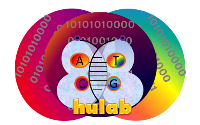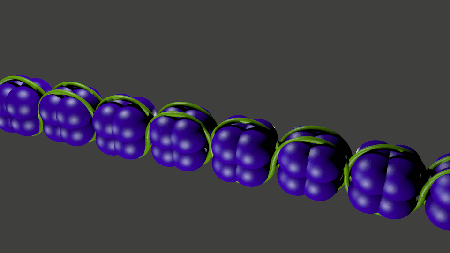Epigenetic Mechanisms
DNA Methylation:
DNA methylation is a vital biochemical process for gene regulation. This chemical reaction does not change DNA sequencing but adds a methyl group to an adenine or cytosine. This addition of a methyl group generally results in the silencing of nearby genes. Enzymes called DNA methyltransferase create and maintain the methylated patterns found in DNA. Many studies have found that cancer patients have high levels of 5-methylcytosine. Click for More Information on Disease

Certain enzymes can trigger histone modification resulting in the activation or silencing of genes by altering chromatin structure.
Histones and Tags:
DNA coils itself around these histone octamers and a linker histone, H1, to form nucleosomes. A histone octamer is a protein complex that is generally made up of two copies of the four core histones, H2A, H2B, H3, and H4. Genes that are found on tightly wound DNA are harder to be reached and are therefore less expressed, while genes that are found on more loosely wound DNA are likely to be expressed more. Histone tags are known to affect the structure of chromatin.
Methyl tags promote nucleosomes to coil more tightly around each other which results in lower expression levels for those affected genes. Acetyl tags can relax nucleosomes allowing those genes to be more accessible and expressed more. Other known histone tags include phosphoryl, ubiquitin, SUMO, and ADP-ribose.
Methyl tags promote nucleosomes to coil more tightly around each other which results in lower expression levels for those affected genes. Acetyl tags can relax nucleosomes allowing those genes to be more accessible and expressed more. Other known histone tags include phosphoryl, ubiquitin, SUMO, and ADP-ribose.
Non-Coding RNA:
RNA that is not translated into proteins are called "non-coding" RNA. Micro RNA (miRNA) is a type of non-coding RNA that plays a crutial role in gene regulation. miRNA molecules can bind to specific mRNA molecules and trigger enzymes to degrade the mRNA before it can be translated into proteins. It is thought that around 60% of genes are regulated by miRNA.
Although many studies have been done on miRNA, their exact function is still mostly unknown. Although generally miRNA hinders gene expression, there have been cases where miRNA actually promotes gene expression by binding to mRNA. Another area of interest is on how these miRNA molecules themselves are regulated within a cell.
Although many studies have been done on miRNA, their exact function is still mostly unknown. Although generally miRNA hinders gene expression, there have been cases where miRNA actually promotes gene expression by binding to mRNA. Another area of interest is on how these miRNA molecules themselves are regulated within a cell.
High Throughput Sequencing:
High throughput sequencing processes massive amounts of short DNA sequencing at a much lower cost than previous methods. It does this by chopping DNA into many smaller segments to be read in parallel. These short reads are then reconstructed based on a reference genome. Chromosome conformation capture is a form of high throughput sequencing allows scientists to study the organization and three dimensional structure of DNA. Next generation sequencing has allowed for a better understanding of the genome and epigenome because it allows for more data to be collected cheaper, faster, and more accurately than previous methods.
Advancements in DNA sequencing technologies are vital because they reduce the cost and time it takes to sequencing the genome. These advancements along with scientific research will allow for gene therapy to become a viable option. Popular forms of next generation sequencing include 454, Illumina and SOLiD.
Advancements in DNA sequencing technologies are vital because they reduce the cost and time it takes to sequencing the genome. These advancements along with scientific research will allow for gene therapy to become a viable option. Popular forms of next generation sequencing include 454, Illumina and SOLiD.
Resources:

